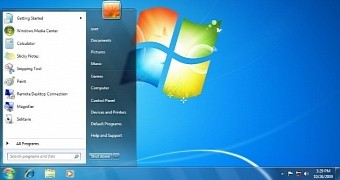Microsoft will officially retire Windows 7 on January 14, 2020, at which point the company will become nearly entirely focused on Windows 10.
With Windows 8.1 remaining the only non-Windows 10 version still receiving support, Microsoft giving up on Windows 7 will most likely become a challenge for the software giant and users alike, especially given how popular the 2009 operating system still is these days.
Windows 7 has more than 30 percent market share, which means that more than 3 in 10 computers out there are still on the OS that Microsoft plans to kill in less than six months.
For Microsoft, this can only be bad news, especially because one more user staying with Windows 7 means one user not migrating to Windows 10.
For users, on the other hand, it’s one difficult migration that many won’t be willing to do, and judging from these market share stats, there’s a chance lots of them would stick with Windows 7 even beyond the January 2020 deadline.
Back in 2014 when Microsoft retired Windows XP, approximately 25 percent of the world’s desktop computers were still running the 2001 operating system. Today, Windows XP still has around 2 percent market share, more than five years after Microsoft ditched it.
In the case of Windows 7, killing off the OS could be mission impossible.
Statistics shared by security vendor Kaspersky shows that no less than 38 percent of the consumers were still running Windows 7. As for SMBs, 47 percent of them were on the same platform.
As it happens every time when a Windows version is retired, organizations and government agencies worldwide are among those most heavily impacted.
For example, research conducted by Kollective earlier this year indicated that 96 percent of the businesses were in the process of upgrading to Windows 10, but only a few of them actually estimated they had the time to complete the whole migration before the end of support for Windows 7 comes. This means some would stick with Windows 7 even after the January 2020 deadline.
Unsurprisingly, Microsoft’s push for everyone to give up on Windows 7 and move to Windows 10 could sometime backfire. The South Korean government, for example, said they were looking at Linux as a possible destination, not to Windows 10 as Microsoft expected, and it’s all because of costs.
Linux could help reduce costs with software licensing, albeit as some discovered the hard way, more money could be spent on compatibility improvements and staff training.
Similarly, the Bath and North East Somerset Council says Microsoft retiring Windows 7 forces them to spend a fortune on upgrades, as installing Windows 10 requires new hardware whose costs are estimated to reach 1.5 million pounds.
Microsoft’s trying to convince everyone that moving from Windows 7 to Windows 10 isn’t as difficult as it seems, as 99 percent of the applications work on the new OS in the first place. For the rest of 1 percent, Microsoft is offering technical support to make sure the upgrade goes smoothly.
Nevertheless, it’s pretty clear that the world not only that isn’t ready to give up on Windows 7, but also that it’s afraid of doing it in the first place. Windows 7 felt like home for so many years, and the January 2020 deadline is going to represent quite a hit for a lot of Microsoft customers.
Meanwhile, Windows 10 is still here waiting for everyone who wants to upgrade. The new OS is already powering half of the world’s desktop computers, so it’ll be interesting to see how much it can grow given that the death of Windows 7 is just around the corner.

 14 DAY TRIAL //
14 DAY TRIAL //